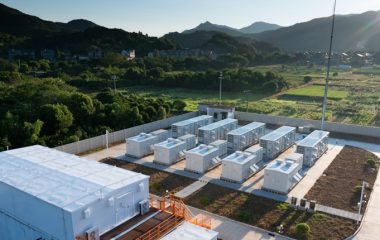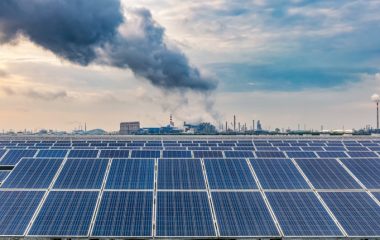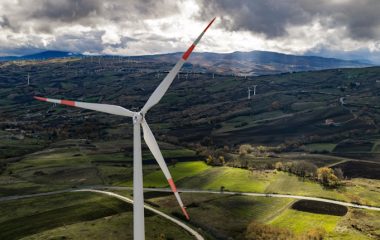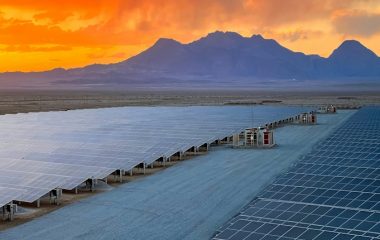
Photo: EUSEW
Share
Share
By Luke Haywood, Policy Manager for Climate and Energy and Hannah O’Sullivan, Associate Communications Officer for Climate and Energy: European Environmental Bureau, one of EUSEW partner organisations.
In less than a year, billions of euros from the Social Climate Fund (SCF) will land in EU governments’ pockets, but some countries are already calling for a delay of carbon pricing in heating and transport (ETS-2), due to start operating in 2027. It is critical that policymakers stand firm behind one of the most critical components of the European Green Deal. For ETS-2 to work, two elements are crucial: first, revenues need to be distributed equitably and, second, other policies to reduce fossil fuel demand must complement the EU’s carbon price.
Why revenues should be returned to people
ETS-2 puts the ‘polluter pays’ principle into action, with the biggest polluters paying the most. But for many low-income European households, this cost could be a large burden. This is why the SCF was created to fund strategies to help disproportionately affected households. Funded primarily by the revenues from ETS-2, the SCF can be used in a variety of ways, from expanding existing transport services to direct income support for all households. This is one of the advantages of a carbon price: revenues can be used to address some of the costs of moving away from fossil fuels.
Many households who experience energy or transport poverty will be disproportionately impacted by ETS-2. As they likely lack the means to transition from fossil fuels alone, targeted support schemes will be crucial to aiding them. One-stop shops to provide local assistance and access to information, subsidies for replacing fossil boilers with heat pumps, or discounted public transport access can all contribute to alleviating the financial burden of decarbonisation for lower-income households.
Several countries where a carbon pricing system is already in place for building and transport emissions have opted for climate dividend schemes
Several countries where a carbon pricing system is already in place for building and transport emissions have opted for climate dividend schemes. An annual direct payment to all citizens provides relief if carbon prices are high, provides financial resources to assist households in transitioning away from fossil fuels, and increases public trust in the carbon pricing system.
This works successfully in Austria for example, where carbon pricing revenues are returned in annual direct payments. Schemes can differentiate payments by income – as the Austrian scheme does by making payments taxable – and by quality of public transport, resulting in higher payments for people living in rural areas. Citizens will ultimately pay the carbon price, so returning the revenues to them, rather than to big businesses, is the most socially just distribution.
ETS-2 is not a silver bullet
Prices in ETS-2 will be high if demand for fossil fuels remains high. Policies that reduce fossil fuel demand by means other than the ETS-2 will therefore have a dampening effect on the price. For example, a substantial investment in bicycle infrastructure in urban areas would reduce transport fuel demand and thus lower costs for citizens in rural areas who still rely on cars but do not yet have the resources to buy an electric vehicle. Any regulatory policy that reduces emissions in building and transport will result in lower ETS-2 prices, especially if enacted by the very large polluting countries – Germany, France and Italy account for over half of all ETS-2-relevant emissions across the EU.
Other national policies can reduce demand too. A carbon price floor could set a minimum carbon price in transport and heating such that if the ETS-2 price falls below it, the national carbon price kicks in, a system the UK successfully pioneered for the ETS-1 while they were still in the EU. This would increase the predictability of the ETS-2 price, support investments in decarbonisation, and reduce carbon price levels and volatility in the long term.
The process of establishing National Social Climate Plans that determine the spending of ETS-2 revenues via the Social Climate Fund provides a good opportunity to consider how to make ETS-2 work, both by smart distribution of revenues and with complementary policies that contain price levels in the first place.
The extension of carbon pricing to heating and transport fuels will be a litmus test for EU climate policy as energy prices may soar if proper supporting measures are not implemented. The majority of building and transport emissions are produced in Germany, Italy and France, so it will be complementary measures taken there that determine the price of emissions for the whole of the EU. For countries with higher rates of energy and transport poverty such as Bulgaria, Hungary or Slovakia, supporting households to permanently phase out fossil fuels should be a priority.
This opinion editorial is produced in co-operation with the European Sustainable Energy Week 2025. See ec.europa.eu/eusew for open calls.









The importance for member states to consider returning ETS2 revenue to households could prove key to the political and public support for this important climate legislation. By 2030 transport fuel alone might be 10% – 40% higher by 2030.
The Potsdam Institute for Climate Impact Research models prices for the ETS2 by 2030 to be between €70 and €260. For petrol and diesel this broadly adds 15c – 50c per litre to the European average fuel costs of €1.20 to €1.50 per litre.